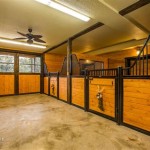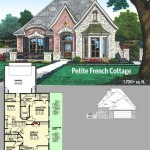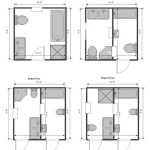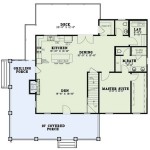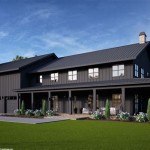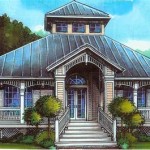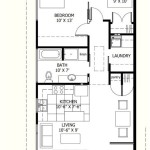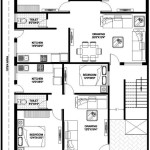House Plans for 30-Foot Wide Lots: Maximizing Space and Design
Designing a house for a lot that is 30 feet wide presents unique architectural challenges and opportunities. These relatively narrow lots, common in urban and suburban areas, require careful planning to maximize usable space, ensure comfortable living, and maintain aesthetic appeal. House plans tailored for 30-foot wide lots must prioritize efficient layouts, strategic use of natural light, and innovative storage solutions. This article will explore key considerations and common design elements found in house plans specifically designed for these dimensions.
One of the primary considerations when designing for a 30-foot wide lot is adherence to local building codes and zoning regulations. Setback requirements, which dictate the minimum distance a building must be from property lines, can significantly impact the buildable area. These setbacks often vary depending on the jurisdiction and can differ for the front, side, and rear of the property. Understanding and complying with these regulations is crucial before finalizing any house plan. Failure to do so can result in costly modifications or even the rejection of building permits.
Beyond setbacks, other zoning regulations concerning building height, lot coverage, and parking requirements must be taken into account. Height restrictions can influence the number of stories that can be incorporated into the design. Lot coverage limits, which restrict the percentage of the lot that can be covered by the building, can further constrain the footprint of the house. Parking regulations may necessitate the inclusion of a garage or off-street parking space, potentially impacting the overall layout, especially at the front of the house.
The design process should begin with a thorough site analysis. This involves understanding the topography of the lot, orientation to the sun, prevailing wind direction, and existing vegetation. The sun's path will influence the amount of natural light entering the house, dictating the placement of windows and outdoor living spaces. The prevailing wind direction can impact the placement of doors and windows to optimize natural ventilation. Existing trees or other vegetation can be incorporated into the landscape design or may need to be removed depending on the building footprint.
Optimizing Interior Layout
Given the limited width of a 30-foot lot, the interior layout of the house must be carefully planned to maximize usable space. Open floor plans are a common and effective strategy for creating a sense of spaciousness. By eliminating interior walls between the living room, dining area, and kitchen, a larger, more functional space is created. This open layout also allows for better natural light distribution throughout the house.
Vertical space becomes particularly important in 30-foot wide house designs. Multi-story designs, including two-story houses or houses with finished basements, are typical solutions for maximizing living area. The strategic placement of staircases is crucial; they consume valuable floor space, so their design and location must be optimized. Spiral staircases or strategically placed straight staircases can minimize their footprint.
Another effective strategy is to minimize hallway space. Hallways consume valuable square footage without adding functional living area. Layouts that prioritize direct access between rooms can reduce or eliminate the need for long hallways. Where hallways are necessary, they should be designed to be as narrow as possible while still meeting building code requirements.
Storage solutions are paramount in narrow house designs. Built-in shelving, cabinets, and other storage features can maximize space utilization and minimize clutter. Utilizing vertical space for storage, such as floor-to-ceiling shelving, is especially beneficial. Under-stair storage is another often-overlooked opportunity for maximizing storage capacity. Consider designing closets and storage areas with adjustable shelving to accommodate a variety of items and needs.
The placement of bathrooms and utilities should be strategically considered. Grouping bathrooms and laundry rooms together can simplify plumbing runs and reduce construction costs. Locating these rooms near the center of the house can also minimize the impact on exterior wall space, allowing for more windows and natural light in living areas.
Maximizing Natural Light and Ventilation
Given the limited width of the lot, maximizing natural light and ventilation is essential for creating a comfortable and inviting living environment. Natural light not only enhances the aesthetic appeal of the house but also reduces the need for artificial lighting, saving energy and reducing utility costs. Proper ventilation helps to maintain indoor air quality and reduces the risk of moisture buildup and mold growth.
Large windows and strategically placed skylights can significantly increase the amount of natural light entering the house. Window placement should consider the orientation of the house to the sun. South-facing windows will generally receive the most direct sunlight, while north-facing windows provide more diffused light. East-facing windows are ideal for morning sunlight, while west-facing windows can provide afternoon sunlight but may also contribute to heat gain.
Consider incorporating a light well or courtyard into the design. A light well is an open space within the house that allows natural light to penetrate deeper into the interior. A courtyard, either enclosed or semi-enclosed, can provide a private outdoor living space while also allowing light to enter surrounding rooms. These features can significantly improve the natural light and ventilation in a 30-foot wide house.
Natural ventilation can be enhanced through the placement of operable windows and doors. Cross-ventilation, where windows are placed on opposite sides of the house, allows for airflow to circulate through the living spaces. Operable skylights can also provide ventilation while allowing hot air to escape from the upper levels of the house. Consider using energy-efficient windows and doors to minimize heat loss in the winter and heat gain in the summer.
The use of light-colored interior finishes can also help to maximize natural light. Light-colored walls, ceilings, and flooring reflect more light, making the interior feel brighter and more spacious. Mirrors can also be used strategically to reflect light and create the illusion of more space.
Enhancing Exterior Design and Curb Appeal
While the interior design focuses on maximizing space and functionality, the exterior design plays a crucial role in creating a visually appealing and welcoming home. Enhancing curb appeal is particularly important in a 30-foot wide lot, where the limited width can make the house appear narrow or boxy if not designed carefully.
Consider breaking up the facade with varying materials and textures. Using different siding materials, such as brick, stone, or wood, can add visual interest and dimension to the exterior. Adding architectural details, such as dormers, gables, or window trim, can also enhance the overall aesthetic appeal of the house.
Landscaping plays a vital role in enhancing curb appeal. Well-designed landscaping can soften the lines of the house, add color and texture, and create a welcoming entry. Consider using a combination of trees, shrubs, and flowers to create a visually appealing landscape. A well-maintained lawn and attractive walkway can also significantly improve curb appeal.
The placement of the front door is crucial in creating a welcoming entry. A prominent front door, perhaps accented with a decorative canopy or porch, can draw the eye and make the house feel more inviting. Consider using a bright or contrasting color for the front door to make it stand out.
Driveway and walkway design can also impact curb appeal. A well-designed driveway should be functional and aesthetically pleasing. Consider using decorative pavers or concrete to enhance the appearance of the driveway. A wide and inviting walkway leading to the front door can also improve curb appeal.
Incorporate outdoor living spaces, such as a front porch or balcony, into the design. These spaces not only provide additional living area but also enhance the visual appeal of the house. A well-designed porch or balcony can create a welcoming and inviting atmosphere.
Finally, consider the overall architectural style of the house. Choose a style that complements the surrounding neighborhood and reflects your personal tastes. Whether you prefer a traditional, modern, or contemporary design, ensure that the overall aesthetic is cohesive and well-executed.
Designing a house plan for a 30-foot wide lot requires careful consideration of numerous factors, from zoning regulations to interior layout and exterior design. By prioritizing efficient space utilization, maximizing natural light, and enhancing curb appeal, it is possible to create a comfortable, functional, and aesthetically pleasing home on a narrow lot. Proper planning and innovative design solutions are the keys to success in this challenging architectural endeavor.

The Best 30 Ft Wide House Plans For Narrow Lots Houseplans Blog Com

The Best 30 Ft Wide House Plans For Narrow Lots Houseplans Blog Com

The Best 30 Ft Wide House Plans For Narrow Lots Houseplans Blog Com

2 Bed House Plan Under 30 Feet Wide 51863hz Architectural Designs Plans

12 30 Ft Wide Ideas House Plans Floor Plan Design

House Plans The Morgan Cedar Homes

House Plans The Wilkinson Cedar Homes

House Plan For 30 X 80 Feet 266 Square Yards Gaj Build Up Area 3080 Sq Ploth Width One Floor Plans 30x50 N

30 Feet Wide Modern House Plan

House Plan For 30 X 70 Feet Plot Size 233 Sq Yards Gaj Archbytes Plans Gallery How To

